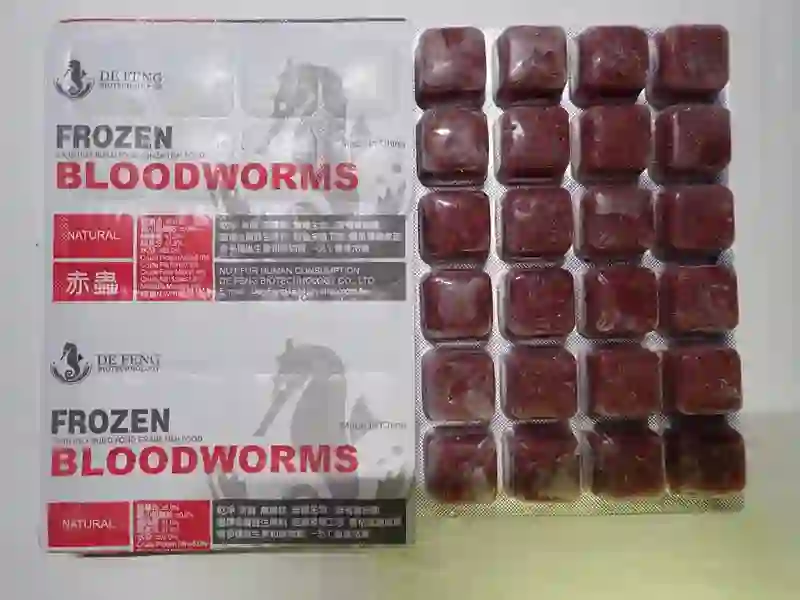
Frozen Bloodworms
*Thoroughly sterilized and cleaned, removing harmful and unnecessary organisms.
*Freezing and drying techniques retain the live nutrition while ensuring the food's color, aroma, and flavor.
*High protein content, making it a premium natural food source for nearly all fish species.
*Convenient aluminum foil packaging with small compartments, easy to use - just press and feed.
SIZE: 5-13mm
Bloodworms are segmented aquatic animals from the class Oligochaeta, recognized by their vivid red color and cylindrical, bristle-covered bodies. Found in freshwater lakes, ponds, and rivers, bloodworms are known for their resilience and ability to thrive even in low-oxygen or slightly polluted environments. As a trusted Fish Feed Company, we provide premium-grade Frozen Bloodworms Cubes that retain natural nutrients and pigments essential for ornamental fish.
These small invertebrates feed on organic matter, algae, and bacteria, making them nutrient-dense and highly digestible for fish. As part of a well-balanced diet, Frozen Bloodworms Cubes offer an excellent protein source, closely resembling what fish consume in nature. They help trigger natural feeding behavior in species like guppies, discus, and koi—supporting activity levels and overall well-being.
Beyond nutrition, bloodworms provide rich natural pigments that enhance the coloration of ornamental fish. Many a Fish Feed Company promotes color enhancers, but Frozen Bloodworms Cubes deliver these benefits naturally, without artificial additives. Whether for hobby aquariums or commercial breeding, bloodworms are a high-value feed option that improves fish health, color, and vitality.